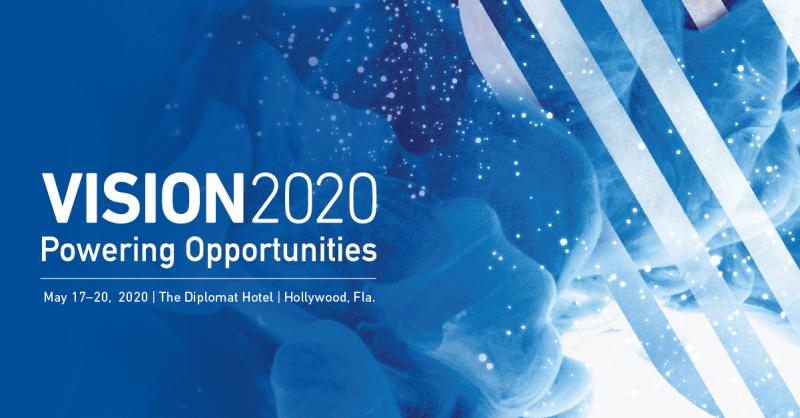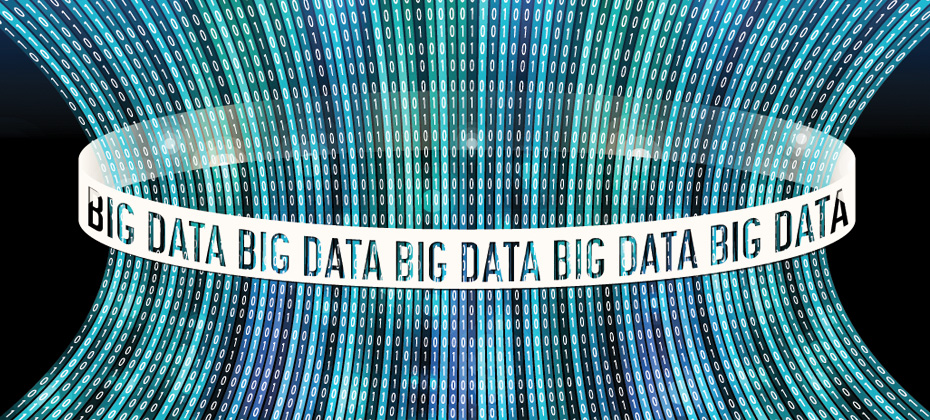Mortgage Trends

There are many facets to promoting a more equitable society. One major driver is financial inclusion or reducing the racial wealth gap for underserved communities. No other tool has impacted generational wealth more than sustainable homeownership. However, the underserved and underbanked home buyers experience more barriers to entry than any other consumer segment. It is important to recognize the well-documented racial and ethnic homeownership gap; doing so will not only benefit the impacted communities, but also elevate the level of support of those lenders who serve them. What are we doing as an industry to reduce this gap? Many organizations are doing their part in removing barriers to homeownership and systemic inequities. In 2021, the FHFA published their Duty to Serve 2021 plans for Fannie Mae and Freddie Mac to focus on historically underserved markets. A part of this plan includes increasing liquidity of mortgage financing for lower- and moderate-income families. Fannie Mae and Freddie Mac each announced individual refinance offerings for lower-income homeowners – Fannie Mae’s RefiNow™ and Freddie Mac’s Refi PossibleSM. Eligible borrowers meet requirements including income at or below 100% area median income (AMI), a minimum credit score of 620, consideration for loans in forbearance and additional newly expanded flexibilities. As part of the plan, lenders will lower a borrower’s monthly payment by at least a half a percentage point reduction in their interest rate, which can translate into hundreds of dollars of savings per month and sustain their homeownership. Experian has the tools to help mortgage lenders take advantage of this offering As a leader in data, analytics and technology, we have the tools needed to help lenders recognize opportunities to be inclusive and identify borrowers who may be eligible for Fannie Mae’s and Freddie Mac’s lower-income refinance offerings. To illustrate, we performed a data study and identified over 6M eligible mortgages nationwide (impacting over 8M borrowers) for this plan, and some lenders had as much as 30% of mortgages in their portfolio eligible with lower- and moderate-incomes.1 These insights can have a positive impact on the borrowers you serve by promoting more inclusion and benefit lenders through improved customer retention, strengthened customer loyalty and an opportunity to continue to build generational wealth through housing. We are committed to enabling the industry's DEI evolution As the Consumer’s bureau, empowering consumers is at the heart of everything we do. We’re committed to developing products and services that increase credit access, greater inclusion in homeownership and narrowing the racial wealth gap. Below are a few of our recent initiatives, and be sure to check out our financial inclusion resources here: United for Financial Health: Promotes inclusion in underserved communities through partnerships and have committed to investing our time and resources to create a more inclusive tomorrow for our communities. Project REACh (Roundtable for Economic Access and Change): brings together leaders from banking, business, technology, and national civil rights organizations to reduce barriers that prevent equal and fair participation in the nation’s economy, and we are engaged with the Alternative Credit Scoring Utility group as part of this initiative. Operation Hope: Empowers youth and underserved communities to improve their financial health through education, so they can thrive (not just survive) in the credit ecosystem so they can sustain good credit and responsibly use credit. DEI-Centric Solutions: From Experian Boost to our recent launch of Experian Go, we offer a variety of consumer solutions designed to empower consumers to gain access to credit and build a brighter financial future. What does this mean for you? Our passion, knowledge and partnerships in DEI have enabled us to share best practices and can help lenders prescriptively look at their portfolios to create inclusive growth strategies, identify gaps, and track progress towards diversity objectives. The mortgage industry has a unique opportunity to create paths to homeownership for underserved communities. Together, we can drive impact for generations of Americans to come. Let’s drive inclusivity and revive the American dream of homeownership. 1Experian Ascend™ as of November 2021

Reporting positive rental payment histories to credit bureaus has been in the news more than once in recent months. In early November, Freddie Mac announced it will provide closing cost credits on multifamily loans for owners of apartment properties who agree to report on-time rental payments. In July, California began requiring multifamily properties that receive federal, state or local subsidies to offer each resident in a subsidized apartment home the option of having their rental payments reported to a major credit bureau. And while reporting positive rental payments to credit bureaus may not yet be part of the multifamily mainstream, forward-thinking operators have already been doing it for years. Below is a quick primer on this practice and its benefits. Why do renters need this service? A strong, positive credit history is critical to securing car loans, credit cards and mortgages – and doing so at favorable interest rates. Unfortunately, unlike homeowners, apartment residents traditionally have not seen a positive impact on their credit reports for making their rent payments on time and in full, even though these payments can be very large and usually make up their largest monthly expense. In fact, renters are seven times more likely to be credit invisible – meaning they lack enough credit history to generate a credit score – than homeowners, according to the Credit Builders Alliance (CBA). This especially impacts lower-income households and communities of color. Renters make up approximately 60% of the U.S. households that make less than $25,000 a year, while Black and Hispanic households are twice as likely as White households to rent, according to the CBA. Experian is among the organizations working with the Consumer Data Industry Association (CDIA) on the association's Rental Empowerment Project. Through the REP, CDIA and its partner organizations seek to increase the reporting of rental payment history information by landlords and property managers through the development and adoption of a uniform, universal data reporting format for landlords and property managers to use. How does reporting positive rental payments to credit bureaus have an impact on a resident's credit history? The impact on any individual renter will obviously vary because of a wide array of factors. But to get some sense of the potential impact reporting on-time rental payments can have, consider the results of the CBA's Power of Rent Reporting pilot. In that test, 100% of renters who started off with no credit score became scorable at the near prime or prime level. In addition, residents with subprime scores saw their score increase by an average of 32 points. How does reporting positive rent payments benefit rental-housing owners and operators? Reporting positive rental payments provides residents with a powerful incentive to pay their rent on time and in full. And because there’s not a huge percentage of apartment communities currently doing this, helping residents build their credit history in this manner can offer a real competitive advantage. Learn more

As last year’s high-volume mortgage environment wanes, lenders are shifting focus to address another set of challenges. Continued economic uncertainty lingers as consumers navigate towards recovery. As such, mortgage lenders have less clarity than normal to assess risk and measure performance in their servicing portfolios. On top of that, more lenders are struggling with customer retention than ever before, due to a historically low rate environment in 2020. These combined factors create a new set of challenges servicers will face in the coming months. We explore a few of these challenges below. An incomplete picture of risk The CARES Act accommodation reporting structure has made it challenging for servicing teams to fully understand the impact of forbearance in their portfolios. If looking only at a CARES Act accommodated borrower’s credit profile, there is no indication whether that consumer would otherwise be delinquent or headed towards default. In turn, lenders cannot model out risk based on this information alone. Borrowers’ financial situations can still change rapidly, and some are still struggling to regain their financial footing. Property data also plays a part in a holistic view of risk. Partly due to lack of housing inventory, home equity continues to rise in many areas of the country, yet there is still uncertainty around whether prices are overinflated, whether the market will correct itself and by how much, and the impact the foreclosure moratorium may have on one’s portfolio. And property dynamics continue to change due to consumer migration stemming from the onset of virtual or hybrid work environments, where homeowners are less bound geographically to a place of work. Being able to have insight into a holistic view of risk is critical to navigating the upcoming months in mortgage servicing. Low borrower retention 2020’s prevailing low-rate environment continues to persist well into 2021 creating a big challenge for mortgage servicers in terms of borrower retention. Borrowers continue to be incentivized to refinance, and in some instances multiple times, to capture the savings throughout the life of their mortgage. Every time a borrower refinances, the lender who’s servicing the loan risks losing the borrower to another lender. This portfolio runoff can create losses for the lender; high portfolio run off rates have shown to negatively impact portfolio performance and investor credibility while increasing marketing cost for new customer acquisition. In our Mortgage in 2021 webinar, we point to the sheer magnitude of this – at the end of 2020, a whopping 33% of first mortgages were less than a year old. Additionally, with the uptick in the number of fintech mortgage lenders and aggregation websites, it has become increasingly easy for consumers to shop for alternative options. Being able to predict the consumers likely to refinance can help servicers retain existing customers and reduce losses. Lack of operational efficiency Lenders and servicers had to increase the capacity of their systems, oftentimes at the turn of a dime, due to last year’s record-breaking origination volumes. This led to massive growing pains while simultaneously stress-testing a company’s systems and processes. As a result, the overall cost to produce a mortgage has risen. Borrower data hygiene poses a challenge for many servicers as well. There was a lot of movement in 2020 in terms of mergers and acquisitions which may also affect servicers’ operational efficiency. Marrying several disparate data points during such events can lead to borrower data inconsistencies and duplicates across loan origination systems. And as consumers come out of forbearance or deferral status, servicers are managing more calls to their inbound call centers, increasing the scope of the problem. Having tools to ensure data accuracy and correct consumer contact information can help reduce operating cost. Conclusion There certainly is a lot of pressure on servicers to optimize and be in a position to efficiently help homeowners in need as forbearance and foreclosure moratoriums end. But with the right data, insights and partners, mortgage servicers can navigate these challenges all while managing risk and enabling the business to grow safely. In our next blog, we highlight what forward-thinking lenders and servicers are focusing on now to navigate the upcoming months in mortgage servicing. Learn more

As quarantine restrictions lift and businesses reopen, there is still uncertainty in the mortgage market. Research shows that more than two million households face foreclosure as moratoriums expire. And with regulators, like the Consumer Financial Protection Bureau (CFPB), urging mortgage servicers to prepare for an expected surge in homeowners needing assistance, lenders need the right resources as well. One of the resources mortgage lenders rely on to help gain greater insight into their borrower’s financial picture is income and employment verification. The challenge, however, is striking the right balance between gaining the insights needed to support lending decisions and creating a streamlined, frictionless mortgage process. There are three main barriers on the path to a seamless and digital verification process. Legacy infrastructure Traditional verification solutions tend to rely on old technology or processes. Whether a lender’s verification strategy is centered around a solution built on older technology or a manual process, the time to complete a borrower verification can vary from taking a day to weeks. Borrowers have grown accustomed to digital experiences that are simple and frictionless and experiencing a drawn out, manual verification process is likely to impact loyalty to the lender’s brand. Stale employment and income data The alternative to a manual process is an instant hit verification solution, with the aim to create a more seamless borrower experience. However, lenders may receive stale borrower income and employment data back as a match. Consumer circumstances can change frequently in today’s economic environment and, depending on the data source the lender is accessing, data may be out of date or simply incorrect. Decisioning based on old information is problematic since it can increase origination risk. Cost and complexity Lenders that use manual processes to verify information are adding to their time to close and ultimately, their bottom line by way of time and resources. Coupled with pricing increases, lenders are paying more to put their borrowers through a cumbersome and sometimes lengthy process to verify employment and income information. How can mortgage lenders avoid these common pitfalls in their verification strategy? By seeking verification solutions focused on innovation, quality of data, and that are customer-centric. The right tool, such as Experian VerifyTM, can help provide a seamless customer experience, reduce risk, and streamline the verification process. Learn more

2020 is finally over – been there, done that. And while it seems safe to say most everyone is all too eager to kick off a new calendar year, the reality is we’re still reeling – and will continue to reel – through the economic impacts of the COVID-19 global pandemic. As we inch closer to the one year marker of when many businesses were sent home – across all industries, including those tech-inclined and those less so – the understatement of the year is that the world has since changed as have consumer communication preferences, how businesses and customers interact, tweaked definitions of privacy, and new (heightened) expectations of evolving a positive customer experience with minimal friction and maximum security. While last year’s predictions of entering a new set of Roaring 20’s may not have panned out the way we had initially imagined, many of the trends thought to evolve over the last 365 days did. As we all look toward a post-pandemic world, here are six top trends to keep tabs on throughout 2021. 1. Data Data as a commodity and as a business differentiating factor has reached an all-time high. It’s doing more across the entire customer lifecycle and can elevate businesses to best prep for growth, especially as consumers begin to look for more financial products (whether looking for financial assistance as the CARES Act accommodation period ends, or to take advantage of the booming mortgage industry, etc.). Data can also give more insights into consumers than ever before. Far beyond just credit scores and financial data, today’s data sets can reveal consumers’ lifestyle preferences, their preferred communication channels, their rental histories, and so much more. With alternative credit data and non-traditional data (including consumer-permissioned data), businesses can get a holistic picture of their customers’ payment behaviors. That streaming media service monthly payment may seem minimal, but now could increase your credit score through Experian Boost. Experian is still making big strides in all efforts to use data for good. As of December 31, 2020, Experian Boost has “boosted” Americans’ credit scores nearly 47 million points. Additionally, throughout 2020, Experian worked with financial institutions and credit furnishers to continue to put consumers first and serve as the consumer’s bureau. Coming up in 2021? Using data for differentiation, which can ultimately drive business growth. From instant prescreens to identifying your best customers (and offering them cross-sell and upsell opportunities to increase retention and customer loyalty) to helping customers that may be on the brink of financial distress and connecting them with management solutions to help them get back on their feet, data can help businesses – and their customers – get there. 2. Fraud and Friction (And the Reduction of Both) With the pandemic, fraud saw increases across the board. Here are just some quick stats: 200% increase in first-time online banking usage immediately following shelter-in-place orders (Aite Group, “Workplace Distancing: Adapting Fraud and AML Operations to COVID-19,” April 2020) 652% year-over-year increase in records found on the dark web (Experian CyberAgent technology) 50% increase in human farming – real people being hired for purposes of fraud – month-over-month in March 2020 (Arkose Labs) And, unsurprisingly, consumer and business sentiments toward fraud are also evolving with these increasing trends. For example, according to Experian’s North America Trends Report, half of consumers continue to site security as the most important factor of their online experience. Additionally, there’s been an increase in the percentage of businesses who have recently increased or are planning to increase fraud budget from 76% in 2019 to 89% as of Sept. 2020. More complex phishing schemes and increased fraudster activity is due in part to numerous industries having to shift to online processes and business transactions overnight. Adoption for mobile wallets has jumped 11% since July 2020, according to the 2020 Global Insights Report. Systems and technology that were not ready or not armed with the necessary infrastructure left critical access points open that could be exploited by fraudsters. Fraud exists across the customer lifecycle, at every access point. And while fraud is complex, with Experian as your partner, solving it isn’t. Innovative technology enables businesses to prevent fraud by identifying credible customers and applying the correct treatment to the riskiest consumer and business accounts. We can help you develop a layered risk management strategy so you can focus resources on growing and protecting your customer relationships. 3. A New Administration – Changing of the Guards on the Regulatory Front With the new year enters the inauguration of a new president and administration. Though there is still much to be determined, certain areas are drawing a lot of attention with this changing of the guards. The highlights? The CFPB. Priorities and leadership could change. With COVID-19 top of mind, it is likely there will be aggressive agendas put forth to help protect the millions of consumers who have suffered economic distress and harm as a result of the pandemic. Data Portability. With an increased consumer appetite to port their data, questions and concerns around data security – and how to verify for a third party asking for the data – are also on the rise. There are a number of issues facing financial institutions around data portability, one of the largest being defining the line between consumer account information and proprietary data. All things privacy – state vs. national bills. The debate continues on how to move forward (whether privacy legislation will be handled by the states or at the national level), but for now it seems there is more progress at the state level. California was the first state to push through state-level privacy legislation in the form of the California Consumer Privacy Act of 2018. Twenty-four states are considering legislation that would require consent before collecting or disclosing personal information with third parties. 4. Analytics + Digitalization – Smarter, Better, Faster COVID-19 accelerated digital transformation for many. Some companies were ready, having already started making the headway in years prior, while others struggled – and some continue to struggle. The pandemic – and its corresponding recovery – is reason now, more than ever, to get some of your digital transformation priorities checked off of your list. Your customers demand it and your business needs it. Tackling analytics and digitalization not only brings your business up to speed, but improves your decisioning, enhances your offerings, and enables better platforms and data usage. In addition to digitalization, artificial intelligence for credit decisioning and personalized banking can also be expected to be a top trend, especially AI that is ethical and explainable, as will the increasing adoption and implementation of cloud computing. As consumer experience continues to reign supreme, any and all technology to enhance and improve that experience – think chatbots and virtual assistants – will also likely increase in presence. 5. Verification & Identity Identity has been a trending topic over the last few years, brought on by increasingly digital lifestyles and the intersection of personalization, frictionless transactions and adequate security. Identity verification and verification of other information such as income, employment and the like are increasingly needed in a today’s pandemic and tomorrow’s post-pandemic world. Leveraged across the lifecycle and during critical customer interactions, the need is especially heightened for insights, data accuracy, and diversification of data sets – to name a few. And while it was already established that identity verification is not just for marketing services, there are now even greater needs for financial institutions to be able to confidently know that their customers are who they say they are. Some areas to keep your eye on in 2021? Identity, income, assets and employment. 6. Redefining the Modern Mortgage As has been a common trend, spurred by the disruption caused by COVID-19, the mortgage industry is one of the many to have a magnifying glass brought to its areas for improvement. Some of those areas include operational efficiency, digital adoption and transparency. In line with the better and faster needs that lenders are continually trying to pace with, the need for speed is hitting mortgage originations, with an ideal situation outlined as closing in 30 days or less. Creating operational efficiencies through faster, fresher data can be the key for lenders to more accurately assess a borrower’s ability to pay upfront. Additionally, now, as most mortgage lenders are breaking previous origination records by a landslide (thanks pandemic), there’s new focus on other performance indicators. With such impetus, the modern mortgage is constantly evolving, incorporating customer-centric facets including a seamless digital process, providing meaningful customer experiences and leveraging the latest and greatest technology to better future-proof the industry through scalable technology, while aiming to reduce costs. For all your needs in 2021 and beyond, Experian has you covered. Learn More

COVID-19 is not only shifting the way we work, live and think, but it is also reframing the conversation behind which metrics successful companies focus on. Having worked in marketing for various lenders, origination and funding milestones were prevalent in their marketing. However, during this unique time in mortgage when most lenders are shattering previous origination records, focus is now drawn to new performance indicators. Providing a seamless digital process A recent McKinsey survey determined that consumer and business digital adoption vaulted five years forward in a matter of eight weeks at the beginning of the pandemic. And while this is generally true for business, many mortgage lenders may not have had the time or resources to update and modernize their processes due to massive origination volumes. When volume is good, companies wait to update their technology – either due to an “if it isn’t breaking why fix it” mentality, or, in the case of unmanageable volume, lenders can’t fathom disrupting their processes. Lenders that proactively streamlined technology and focused on digital adoption before the pandemic are leveraging and benefitting from the current mortgage environment. For lenders that did not digitize in time, the high-volume environment highlights their inefficiencies and unscalable processes. Providing meaningful customer experiences Forward-thinking, resilient mortgage lenders are also tracking how effectively they can provide meaningful customer experiences, for both their borrowers as well as their internal customers – their employees. For borrowers, it could come in the form of enjoying a seamless mortgage experience, being proactively kept abreast of their loan status, and the ability to interact and communicate with the lender in a manner that works best for their style. For employees of the company, this can come from feeling valued and listened to, with relevant and useful communications and resources to rely on during these uncertain times. It also comes in the form of providing the right resources for employees to perform at a high level during these times when it matters the most and working efficiently without sacrificing quality. Investing in technology and your greatest asset, your employees, is the answer to how mortgage lenders can achieve these metrics which will help them stand out among their competition. As the refi heyday starts to show signs of impermanence, these differentiators will become more important than ever – and all lenders should be taking a proactive look now at how they can bridge their digital gaps. Mortgage lenders are coming out of 2020 with strong earnings and should look to allocate a part of these earnings towards ‘future-proofing’ through scalable technology that will ultimately reduce costs and continue to bring in qualified volume. Join Experian Mortgage in accelerating the mortgage evolution and learn how we can help bridge your technology gaps. Learn More

No one can deny that the mortgage and real estate industries have been uniquely affected by COVID-19. Social distancing mandates have hindered open house formats and schedules. Meanwhile, historically low-interest rates, pent-up demand and low housing inventory created a frenzied sellers’ market with multiple offers, usually over-asking. Added to this are the increased scrutiny of how much borrowers will qualify and get approved for with tightened investor guidelines, and the need to verify continued employment to ensure a buyer maintains qualifying status through closing. As someone who’s spent more than 15 years in the industry and worked on all sides of the transaction (as a realtor and for direct lenders), I’ve lived through the efforts to revamp and digitize the process. However, it wasn’t until recently that I purchased my first home and experienced the mortgage process as a consumer. And it was clear that, for most lenders, the pandemic has only served to shine a light on a still somewhat fragmented mortgage process and clunky consumer experience. Here are three key components missing from a truly modernized mortgage experience: Operational efficiency Knowing that the industry had made moves toward a digital mortgage process, I hoped for a more streamlined and seamless flow of documents, loan deliverables and communication with the lender. However, the process I experienced was more manual than expected and disjointed at times. Looking at a purchase transaction from end to end, there are at least nine parties involved: buyer, seller, realtors, lender, home inspectors/inspection vendors, appraiser, escrow company and notary. With all those touchpoints in play, it takes a concerted effort between all parties and no unforeseen issues for a loan to be originated faster than 30 days. Meanwhile, the opposite has been happening, with the average time to close a loan increasing to 49 days since the beginning of the pandemic, per Ellie Mae’s Origination Insights Report. Faster access to fresher data can reduce the time to originate a mortgage. This saves resource hours for the lender, which equates to savings that can ultimately be passed down to the borrower. Digital adoption There are parts of the mortgage process that have been digitized, yes. However, the mortgage process still has points void of digital connectivity for it to truly be called an end-to-end digital process. The borrower is still required to track down various documents from different sources and the paperwork process still feels very “manual.” Printing, signing and scanning documents back to the lender to underwrite the loan add to the manual nature of the process. Unless the borrower always has all documents digitally organized, requirements like obtaining your W-2’s and paystubs, and continuously providing bank and brokerage statements to the lender, make for an awkward process. Modernizing the mortgage end-to-end with the right kind of data and technology reduces the number of manual processes and translates into lower costs to produce a mortgage. Turn times are being pushed out when the opposite could be happening. A streamlined, modernized approach between the lender and consumer not only saves time and money for both parties, it ultimately enables the lender to add value by providing a better consumer experience. Transparency Digital adoption and better digital end-to-end process are not the only keys to a better consumer experience; transparency is another integral part of modernizing the mortgage process. More transparency for the borrower starts with a true understanding of the amount for which one can qualify. This means when the loan is in underwriting, there needs to be a better understanding of the loan status and the ability to better anticipate and be proactive about loan conditions. Additionally, the lender can profit from gaining more transparency and visibility into a borrower’s income streams and assets for a more efficient and holistic picture of their ability to pay upfront. This allows for a more streamlined process and enables the lender to close efficiently without sacrificing quality underwriting. A multitude of factors have come into play since the beginning of the pandemic – social distancing mandates have led to breakdowns in a traditionally face-to-face process of obtaining a mortgage, highlighting areas for improvement. Can it be done faster, more seamlessly? Absolutely. In ideal situations, mortgage originators can consistently close in 30 days or less. Creating operational efficiencies through faster, fresher data can be the key for a lender to more accurately assess a borrower’s ability to pay upfront. At the same time, a digital-first approach enhances the consumer experience so they can have a frictionless, transparent mortgage process. With technology, better data, and the right kind of innovation, there can be a truly end-to-end digital process and a more informed consumer. Learn more

Rays of hope are beginning to shine in the economy that suggest the U.S. may have moved beyond the most acute phase of the economic crisis. The housing sector, in particular, looks poised to regain momentum and perhaps lead the path towards stabilization in the second half of 2020. A “V-Shaped” rebound in mortgage applications Despite record levels of unemployment and widespread economic uncertainty, homebuyers have returned to the market with conviction. After shelter-in-place restrictions curtailed open-house visits and crimped buyer demand in early April, applications to purchase a home have risen for six consecutive weeks, according to the Mortgage Bankers Association. The latest data for the week of May 22nd, indicate that purchase applications were 9% higher than during the same period in 2019. If this trend continues, it will show that significant pent-up demand exists in the housing market that may be able to offset some of the lost spring buying season. April new home sales far exceed expectations After declining by 13.7% in March, new home sales rose a modest 0.6% in April. While this was only a slight gain, it was considerably above economists’ projections of a fall of 20% and may mark the turning point in the downtrend. Since the recording of new home sales data occurs when the purchase contract is signed or a deposit is accepted – and is typically for a house that hasn’t been built yet or is currently under construction – it provides a gauge of how buyers feel about their future economic prospects. Building a home also requires hiring new construction workers, buying building supplies, and supporting a host of ancillary industries, thus making it an indicator of further economic activity. Some of the increase in demand for new homes may have been driven by coronavirus quirks. The number of existing homes on the market is at record lows and many people may have been reluctant to put their home up for sale and have buyers tour as health concerns remain. Buyers, as well, may have preferred to steer clear of occupied homes or were unable to make in-person visits due to shelter-in-place restrictions. This lack of options for home buyers, coupled with record-low mortgage rates, likely drove sales of new homes higher. However, for the same reasons why new home sales rose, pending sales for existing homes fell sharply. In April, the National Association of Realtors reported that sales declined by 21.8%, which is the largest drop in ten years. Home prices continue to gain ground Even with shelter-in-place restrictions dampening buyer demand in early April, home values have continued to rise. This is because the supply of homes on the market also contracted, resulting in a simultaneous drop of demand and supply. According to Zillow Research, the total inventory of homes for sale is down roughly 20% from this time last year. With fewer competing homes on the market, sellers have been reluctant to slash prices and are betting that the lack of options and low mortgage rates will keep buyers on the hook. In April, U.S. home values rose 4.3% from the year before. The states with the strongest growth were Idaho (9.8%), Arizona (8.5%), Maine (7.6%), and Washington (7.4%). It will be interesting to see if this pattern of growth changes as newly implemented work from home policies may shift where people prefer to live and work. Why it matters The housing market has an outsized influence on the overall direction of the U.S. economy. Housing is not only is a big contributor to economic growth, but many owners have a large portion of their wealth tied up in their home. If the housing market can find its footing in the second half of 2020, then it could set the stage for an eventual economic recovery. Learn more

Update: After closely monitoring updates from the WHO, CDC, and other relevant sources related to COVID-19, we have decided to cancel our 2020 Vision Conference. If you had the chance to experience tomorrow, today, would you take it? What if it meant you could get a glimpse into the future technology and trends that would take your organization to the next level? If you’re looking for a competitive edge – this is it. For more than 38 years, Experian’s premier conference has connected business leaders to data-driven ideas and solutions, fueling them to target new markets, grow existing customer bases, improve response rates, reduce fraud and increase profits. What’s in it for you? Everything to gain and nothing to lose. Are you a marketer? These sessions were made to drive your conversion rates to new heights: Know your customers via omnichannel marketing: Your customers are everywhere, but can you reach them? Learn how to drive business-expansion strategy, brand affinity and customer engagement across multiple channels. Plus, gain insight into connecting with customers via one-to-one messaging. By invitation only, the future of ITA marketing: An evolving landscape means marketers face new challenges in effectively targeting consumers while staying compliant. In this session, we’ll explore how you can leverage fair lending-friendly marketing data for targeting, analysis and measurement. Want the latest in technology trends? Dive into discussions to transform your customer experience: Credit in the age of technology transformation: Machine learning and artificial intelligence are the current darlings of big data, but the platform that drives the success of any big data endeavor is crucial. This session will dive into what happens behind the curtain. Put away your plastic – next-generation identity: An industry panel of experts discusses the newest digital identity and authentication capabilities – those in use today and also exciting solutions on the horizon. How about for the self-proclaimed data geeks? Analyze these: Alternative data: Listen in on an in-depth conversation about creative and impactful examples of using emerging data assets, such as alternative and consumer-permissioned data, for improved consumer inclusion, risk assessment and verification services. The next wave in open data: Experian will share their views on the potential of advanced data and models and how they benefit the global value chain – from consumer scores to business opportunities – regardless of local regulations. And the risk masters? Join us as we kick fraud to the curb: Understanding and tackling synthetic ID fraud: Synthetic IDs present a serious challenge for our entire industry. This expert panel will explore the current landscape – what’s working and what’s not, the expected impact of the next generation SSA eCBSV service, and best practice prevention methods. You are your ID – the new reality of biometrics: Consumers are becoming increasingly comfortable with biometrics. Just as CLEAR has transformed how we use our biometric identity to move through airports, sports venues and more, financial transactions can also be made friction-free. The point is, there’s something for everyone at Vision 2020. It’s not just another conference. Trade in stuffy tradeshow halls and another tri-fold brochure for the insights and connections you need to take your career and organization to the next level. Like technology itself, Vision 2020 promises to connect us, unify us and enable us all to create a better tomorrow. Join us for unique networking opportunities, one-on-one conversations with subject-matter experts and more than 50 breakout sessions with the industry’s most sought-after thought leaders.

Experian’s 38th annual Vision Conference kicks off on Sunday, May 5 in San Antonio, Texas. The sold-out thought leadership conference, is known for driving discussions on the industry’s hard-hitting topics as well as introducing the latest and greatest in technology, innovation and data science. “For 38 years, Experian’s Vision Conference has connected business leaders to new ideas and solutions through cutting edge data and insights. Our goal is to power opportunities for you to target new markets, grow existing customer bases, improve response rates, reduce fraud and increase profits by using our data, analytics and technology. The intimate setting of the conference allows for unique networking opportunities with the industry’s most sought-after thought leaders,” said Klaudette Christensen, Experian’s Chief Operations Officer. A few spotlight sessions include: Several sessions about machine learning and artificial intelligence, highlighting opportunities related to best practices, underwriting and fraud detection A deep dive into the modern mortgage, leveraging insights on home equity and how to leverage data and analytics to redefine the process as it’s known today Sessions on credit delinquency, collections and the Great Recession Marketing analytics and the latest releases from Experian’s Ascend Platform Sessions on advanced analytics and integrated decisioning as they relate to commercial and consumer insights The event, which runs through Tuesday evening, continues its tradition of featuring several noteworthy keynote speakers. On Monday, Gary D. Cohn, American business leader, philanthropist and former Director of the U.S. National Economic Council, will kick off the event. On Tuesday, Aimée Mullins will take the stage discussing what is “possible” by drawing from her experiences as a record-breaking Olympic athlete, model and actress. The closing keynote will feature five-time NBA Champion and two-time Olympic Gold Medalist, Kobe Bryant. The event will also include a Tech Showcase, featuring hands-on demos for attendees to experience. Stay tuned for additional highlights and insights on our social media platforms throughout the course of the conference. Follow Experian Insights on Twitter and LinkedIn and check out #ExperianVision.

Millennials have been accused of “killing” a lot of things. From napkins and fabric softener to cable and golf, the generation which makes up the largest population of the United States (aka Gen Y) is cutting a lot of cords. Despite homeowning being listed as one of the notorious generational group’s casualties, it’s one area that millennials want to keep alive, according to recent statistics. In fact, a new Experian study revealed 86% of millennials believe that buying a house is a good financial investment. However, only 15% have a mortgage today. One explanation for this gap may be that they appear too risky. Younger millennials (age 22-28) have an average near prime score of 652 and older millennials (age 29-35) have a prime score of 665. Both subsets fall below the average VantageScore® credit score* of U.S. consumers – 677. Yes, with the majority of millennials having near prime or worse credit scores, we can agree that they will need need to improve their financial hygiene to improve their overall credit rankings. But their dreams of homeownership have not yet been dashed. Seemingly high aspirations (of homeownership), disrupted by a reality of limited assets, low scores, and thin credit files, create a disconnect that suggests a lack of resources to get into their first homes – rather than a lack of interest. Or, maybe not. Maybe, after surviving a few first-time credit benders that followed soon after opening the floodgates to credit, millennials feel like the combination of low scores and the inability to get any credit is only salt in their wounds from their lending growing pains. Or maybe it’s all the student loans. Or maybe it’s the fact that so many of them are underemployed. But maybe there’s still more to the story. This emerging generation is known for having high expectations for change and better frictionless experiences in all areas of their life. It turns out, their borrowing behavior is no different. Recent research by Experian reveals consumers who use alternative financial services (AFS) are 11 years younger on average than those that do not. What’s the attraction? Financial technology companies have contributed to the explosive growth of AFS lenders and millennials are attracted to those online interactions. The problem is many of these trades are alternative finance products and are not reported to traditional credit bureaus. This means they do nothing to build credit experience in the eyes of traditional lenders and millennials with good credit history find it difficult to get access to credit well into their 20s. Alternative credit data provides a deeper dive into consumers, revealing their transactions and ability to pay as evidenced by alternative finance data, rental, utility and telecom payments. Alt data may make some millennials more favorable to lenders by revealing that their three-digit credit score (or lack there of) may not be indicative of their financial stability. By incorporating alternative financial services data (think convenient, tech-forward lenders that check all the boxes for bank removed millennials, not just payday loan recipients), credit-challenged millennials have a chance at earning recognition for their experience with alternative financial services that may help them get their first mortgage. Society may have preconceived notions about millennials, but lenders may want to consider giving them a second look when it comes to determining creditworthiness. In a national Experian survey, 53% of consumers said they believe some of these alternative sources would have a positive effect on their credit score. We all grow up sometime and as our needs change, there may come a day when millennials need more traditional financial services. Lenders who take a traditional view of risk may miss out on opportunities that alternative credit data brings to light. As lending continues to evolve, combining both traditional credit scores and alternative credit data appears to offer a potentially sweet (or rather, home sweet home) solution for you and your customers. *Calculated on the VantageScore® credit score model. Your VantageScore® credit score from Experian indicates your credit risk level and is not used by all lenders, so don't be surprised if your lender uses a score that's different from your VantageScore® credit score.

Hispanics are not only the fastest growing minority in the United States, but according to the Hispanic Wealth Project’s (HWP) 2017 State of Hispanic Homeownership Report, they would prefer to own a home rather than rent. Hispanic Millennials—who are entering their home-buying years—are particularly eager for homeownership. This group is educated, are entrepreneurs and business owners that over index on mobile use, and 9 of 10 say wanting to own a home is part of their Hispanic DNA. For them, it’s not a matter of if but when and how they will become homeowners. An optimistic outlook is also a trait of Hispanic Millennials, who generally are more positive about the future than the average Millennial. They are also confident in their ability to handle different types of tasks that are part of their day-to-day lives. And at 35 percent, the share of bilingual Hispanic Millennials with a household income of $100,000 or more is consistent with U.S. Millennials as a whole Homeownership challenges Yet, despite their optimism and goal of homeownership, Hispanic homeownership at 46.2 percent lags when compared to the overall U.S. home ownership rate of 63.9 percent in 2017. There are signs the gap could narrow; Hispanics are the only demographic to have increased their rate of homeownership for the past three years. Moreover, the report shows Hispanics are responsible for 46.5 percent of net U.S. homeownership gains since 2000. Still, the 2017 State of Hispanic Homeownership Report notes that a shortage of affordable housing, prolonged natural disasters in states with a significant Hispanic presence (California, Florida, Texas), and uncertainty over immigration policy could hinder Hispanic homeownership growth. An opportunity to reach Hispanics It seems most Hispanic Millennials will strive for homeownership at some point in their life, as they believe owning a home is best for their family’s future. With no convincing needed, there is a tremendous opportunity for mortgage providers to look deeper into the reasons behind Hispanic Millennials’ optimism to determine how to insert themselves into that dynamic. Research highlights the importance of creating interest in financial advice and making this a potential means of gaining trust. Hispanic Millennials who gain a better understanding of the benefits—not only for them but for generations to come—and costs of owning a home may translate their confidence into action.

The journey to a mortgage is complex and expensive, so of course the transaction will require more than a few swipes on a smartphone. The U.S. existing home median sales price in October was $274,000 – not cheap. Still, with advancements in digital verification, lenders can dramatically accelerate the process, providing benefits to both their own operations and the consumer mortgage experience. Underwriting a sizeable loan can take weeks with the task of collecting income and asset documents to analyze and verify. In fact, one source from the Mortgage Bankers Association says the average mortgage application has ballooned to 500 pages. The consumer is typically asked to find, print and scan papers revealing insights around employment status and wages, bank and retirement accounts, debts and beyond. The good news is that this process can be handled digitally, and I’m not talking about simply scanning and emailing. Verification solutions exist to enable consumers to grant limited and secure access to digitally verify assets and income. As lenders evaluate verification solutions, one of the key differentiators to seek is Fannie Mae Day 1 Certainty, which claims to slash the average cycle time for income validation by 8.1 days, employment validation by 11.9 days, and asset validation by 6.1 days. * Fannie Mae features a list of approved vendors who provide Fannie Mae-approved verification reports. This group of authorized suppliers receive freedom from representations and warranties for more efficient risk management, and additionally receive the benefit of a more streamlined process through Fannie Mae’s Desktop Underwriter® (DU®). DU’s latest enhancement leverages a verification of asset report derived from aggregated bank account data, something Finicity (an Experian partner) is approved to utilize. Building on Day 1 Certainty, Finicity is participating in a new single source pilot with Fannie Mae to validate income, assets and employment. While it will take time for lenders to embrace this new technology – and consumers will need to feel comfortable granting the digital access and understanding how the process works – the thought is the mortgage journey will become faster and offer an optimized borrower experience. Like so many other aspects in our lives, mortgage is bound to go digital. *Average days saved reflects data captured between January 2017 and June 2017.

The economic expansion just passed the eight-year mark, and consumer credit defaults across mortgages, bankcards and auto loans are at pre–financial crisis levels. More specifically: The first-mortgage default rate dropped 4 basis points from May to 0.60%. The bankcard default rate experienced its first drop in 9 months, with a decrease of 4 basis points bringing it to 3.49%. Auto loan defaults decreased 3 basis points from the previous month to 0.82%. With inflation at 1% to 2%, debt service levels close to record lows, and disposable income increasing and supporting spending growth, consumers are in good financial shape nationally. Lenders should take this opportunity to review and adjust their acquisition strategies accordingly. Can your originations platform capitalize on this?

Call it big data, smart data or evidence-based decision-making. It’s not just the latest fad, it’s the future of how business will be guided and grow. Here are a few telling stats that show data is exploding and a new age is upon us: Data is growing faster than ever before, and we’re on track to create about 1.7 megabytes of new information per person every second by 2020. The social universe—which includes every digitally connected person—doubles in size every two years. By 2020, it will reach 44 zettabytes or 44 trillion gigabytes, according to CIO. In 2015, more than 1 billion people used Facebook and sent an average of 31.25 million messages and viewed 2.77 million videos each minute. More than 100 terabytes of data is uploaded daily to the social channel. By 2020, more than 6.1 billion smartphone users will exist globally. And there will be more than 50 billion smart connected devices in the world, all capable of collecting, analyzing and sharing a wealth of data. More than one-third of all data will pass through or exist in the cloud by 2020. The IDC estimates that by 2020, business transactions on the internet—business-to-business and business-to-consumer—will reach 450 billion per day. All of this new data means we’ll be looking at a whole new set of possibilities and a new level of complexity in the years ahead. The data itself is of great value, however, lenders need the right automated decisioning platform to store, collect, quickly process and analyze the volumes of consumer data to gain accurate consumer stories. While lenders don’t necessarily need to factor in decisioning on social media uploads and video views, there is an expectation for immediacy to know if a consumer is approved, denied or conditioned. Online lenders have figured out how to quickly capture and understand big data, and are expected to account for $122 billion in lending by 2020. This places more pressure on banks and credit unions to enhance their technology to cut down on loan approval times and move away from various manual touch points. Critics of automated decisioning solutions used in lending cite compliance issues, complacency by lenders and lack of human involvement. But a robust platform enables lenders to improve and supplement their current decisioning processes because it is: Agile: Experian hosts our client’s solutions and decisioning strategies, so we are able to make and deploy changes quickly as the needs of the market and business change, and deliver real-time instant decisions while a consumer is at the point of sale. A hosted environment also means reduced implementation timelines, as no software or hardware installation is required, allowing lenders to recognize value faster. A data work horse: Internal and external data can be pulled from multiple sources into a lender’s decisioning model. Lenders may also access an unlimited number of scores and attributes—including real-time access to credit bureau data—and integrate third-party data sources into the decisioning engine. Powerful: A robust decision engine is capable of calculating numerous predictive attributes and custom scoring models, and can also test new strategies against current decision models or perform “what if” simulations on historical data. Data collection, storage and analysis are here to stay. As will be the businesses which are savvy enough to use a solution that can find opportunities and learnings in all of that complex data, quickly curate the best possible actions to take for positive outcomes, and allow lenders and marketers to execute on those recommendations with the click of a button. To learn more about Experian’s decisioning solutions, you can additionally explore our PowerCurve and Attribute Toolbox solutions.